Why is healthcare so confusing? Navigating its complexity is the last thing a patient needs when their health is on the line. Yet, this confusion happens every day — even to career healthcare professionals who understand how the system works. Many startups have been launched to "fix healthcare" due to a founder's personal negative experience. The Health Resources and Services Administration defines health literacy as “the degree to which individuals have the capacity to obtain, process, and understand basic health information needed to make appropriate health decisions.” Without healthcare literacy, navigating the complexities of the healthcare system becomes impossible. It is the foundation of patient self-advocacy. Addressing health literacy goes to the heart of literacy itself. It has as much to do with how information is presented as how it is understood. "Health literacy represents a lot of opportunity on the healthcare industry side. We can do a lot better than...
